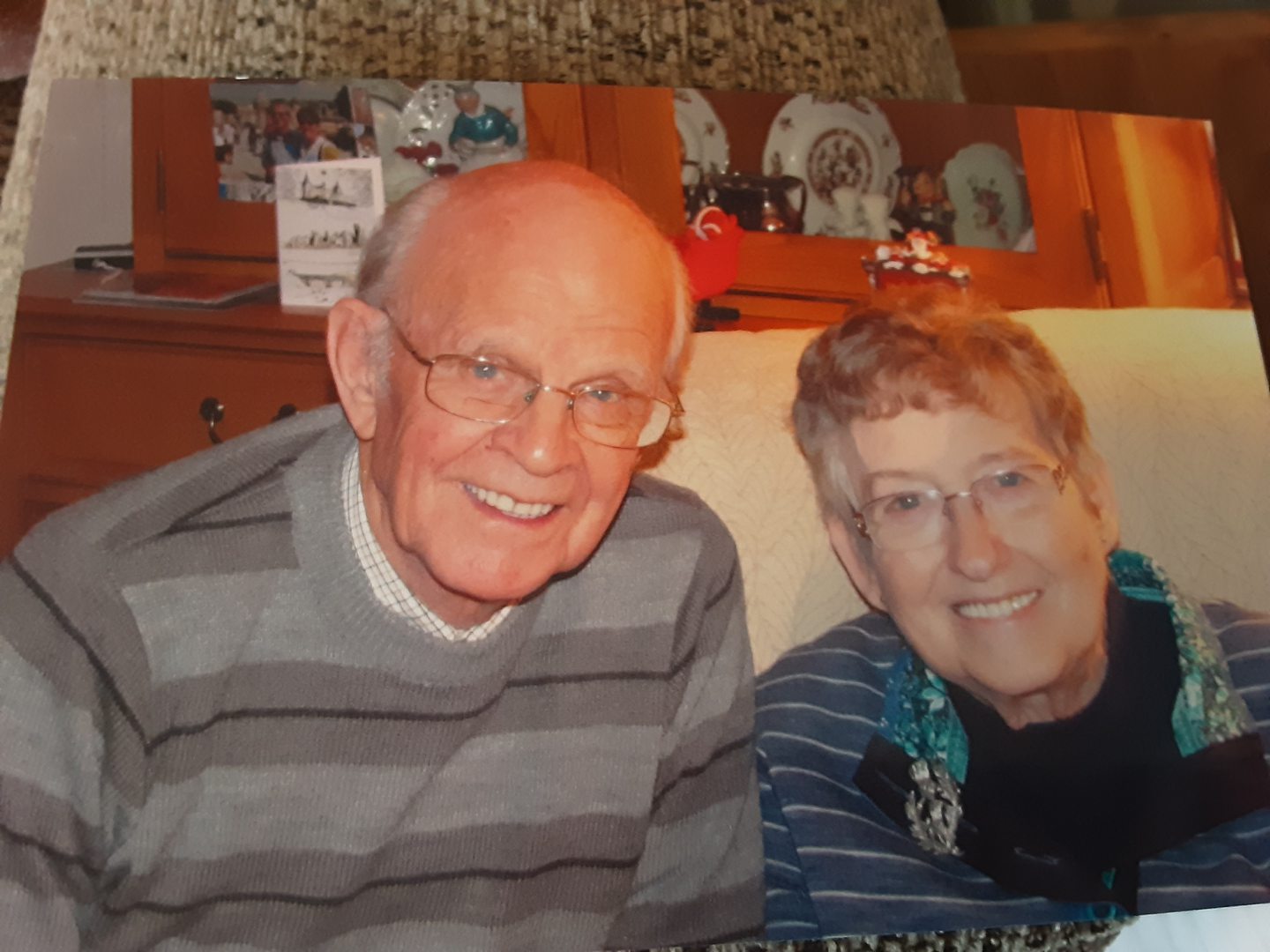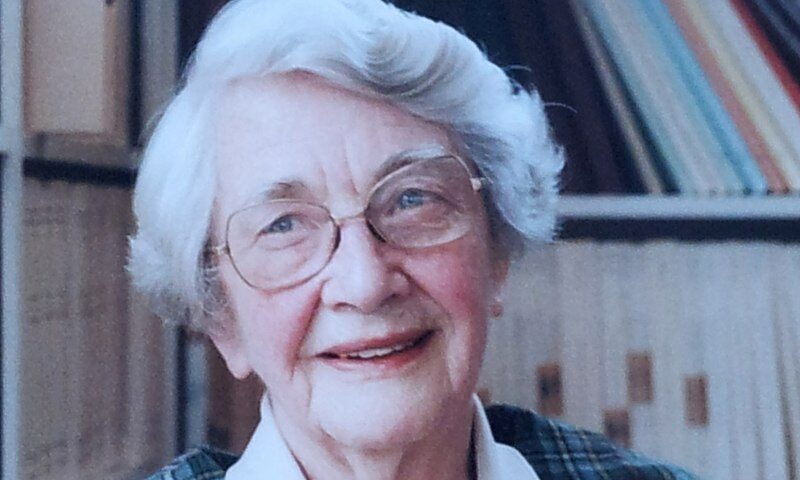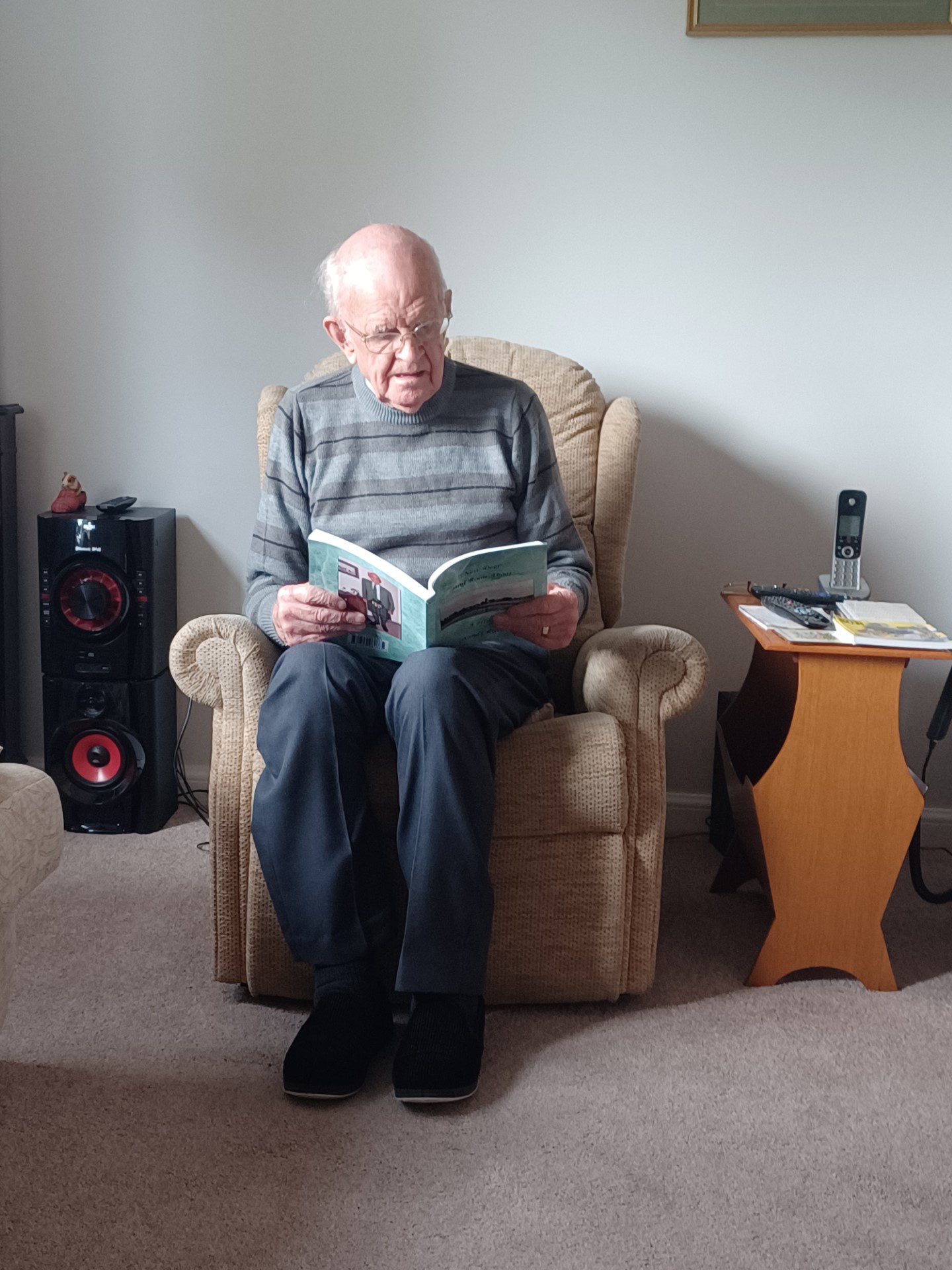
There’s a poignant commemoration to somebody special in Sandy Ritchie’s life on the first inside page of New Deer and Roon Aboot.
It says simply: “This book is dedicated to my dear wife Atholene, who sadly died on April 20, 2023, in our 70th year of marriage.”
On their journey, this couple revelled in their love and companionship for each other, which helped them cope with tragedy and tristesse. Their world was blessed with the arrival of a daughter, Shonah, in 1957, and a second girl, Morag, was born in 1962.
Sandy has faced adversity
Sadly, though, the latter’s life was dreadfully cut short when she was killed on the pavement in a motoring accident while she and her friend were on their way to a park in the summer of 1973 – “at the tender age of 10, she was a great loss to us”.
Yet, if this redoubtable character, Sandy, has had to deal with adversity and worked as a funeral director for many years, there’s also a sense of joy and joie de vivre, ebullience and effervescence about his book, which has a cast list, encompassing everybody from Evelyn Glennie to Jack Webster, Bertie Forbes to Flora Garry – the Buchan Poetess – and the author even finds space for a connection to the songwriting legend Bob Dylan.
At 93, Sandy has a wealth of stories and has been a stalwart of his community for so long it’s impossible to do justice to the myriad gems packed into these pages, which is being launched by the New Deer Community Association next weekend. But it’s safe to say he has been one of those trailblazing individuals who has thrived at the heart of his beloved north-east village, whether in art, music, sport or in his role with the church.
Flora was a late-blooming talent
He recalls the talent, warmth and beauty of Flora Garry, who was born in 1900 at Mains of Auchmunziel, about a mile and a half west of New Deer, who became one of the great Doric writers before her death in 2000, just three months short of her 100th birthday.
Sandy wrote: “Flora told me that as the Professor [her husband, Robert] wrote his memoirs, she ‘just keepit on wi’ her wee scribbles” and her first collection of poems sold out in a week and the second edition was equally popular.
“At the age of 98, she received an honorary Masters degree from Aberdeen University and the principal, Duncan Rice, travelled down to Comrie to bestow the honour [in the company of such stalwart figures as Robbie Shepherd and Jack Webster].
“She had a strong abiding love of her mither tongue, her native New Deer, and all its folk. As she said: ‘It’s jist a place of memories’. When I managed to pay her a visit, I would ring the door bell and when she opened it, her first words were: ‘Come awa in, Sandy. I’ll be able tae hae a news in ma ain tongue for an oor”.
This is one of the prevailing themes of his book; the same sense, which resounds in Lewis Grassic Gibbon’s classic Sunset Song, that we are only here for a short time, and only the land endures, so we had better resolve to make the most of it.
And there’s no doubt this indefatigable fellow has flourished in that environment.
Webster met so many big names
Yet his work serves as a reminder of how much has changed in the last century. Jack Webster’s grandfather, John, died of anthrax and when the future eminent journalist and author was a young lad, he was a sickly child, who spent a lot of time in bed.
Sandy writes: “I am sure that is where he learned the art of watching and listening which has been the backbone of his career. I was a long-time friend and, as a founder member of the Book of Deer Project, I persuaded him to join.
“The project is a community-led initiative which aims to make this important manuscript, that dates back to the 9th or 10th century, more accessible to the wider public. It also conducts archaeological research into identifying the site of the original Monastery of Deer, where this ancient book was written.
He never forgot his roots
“I arranged concerts to help raise the necessary funds and invited Jack to come up to the Mintlaw Hall to answer questions on his remarkable life story. The evening, followed by a concert, was a great success and we were then invited to do an interview at Fyvie Castle, followed by another question-and-answer session in Maud Hall.
“[At another event] in Mintlaw, our friend, Robert Lovie, conducted the interview. There were so many people that we had to turn many away because the hall was packed. But Jack was so well liked in the area and was always thought of as a ‘Maud loon”.
He might have talked to a multitude of Hollywood A-listers, sparred with Muhammad Ali, tracked down Charlie Chaplin – in a world exclusive in the early 1970s – and chatted to the likes of Julie Andrews and Sophia Loren. And yet, Jack never forgot his roots.
Bertie Forbes, who founded the eponymous business magazine in the United States, was another who emerged from the little Scottish community. As a young lad, he took down – in shorthand – the minister’s sermon on a Sunday at the Auld Kirk and subsequently read it to his grandfather when he returned home. The bond was strong.
And, as Sandy relates: “Bertie died in 1954 and was buried in New York. In 1988, his son, Malcolm, arranged for his coffin to be disinterred and taken home and I myself had the great honour of acting as undertaker when Bertie’s remains were re-interred beside his grandfather, James Moir, in the Auld Kirkyard at New Deer.”
So, in death, they were back together again.
Beating a drum for her region
By 1989, Evelyn Glennie had established a formidable musical reputation, just 24 years after her birth in Ellon Maternity Hospital. Despite her hearing loss as a young woman, which led to her travelling to London to meet Ann Rachlin, the founder of the Beethoven Fund for Deaf Children, she emerged as a massively gifted percussionist.
In which light, Sandy must have imagined he was whistling in the dark when he attempted to coax Evelyn back to the place where her mother had played the organ for the 150th anniversary of St Kane’s Church in New Deer. But, once again, the close ties ensured that he managed to bring the idea to fruition.
He explains: “I had quite a bit of negotiating to do with them to persuade them to come – and at a reduced fee – and I was successful, I am sure, with the help of mam Isobel.
“A great evening ensued. I had to lay a wooden plywood covering on the church altar because Evelyn performed her repertoire in her bare feet, getting vibrations up from the floor. It was a never-to-be-forgotten evening that was enjoyed by around 800 people.”
As he noted, the now “Dame Evelyn” has achieved global fame. But that didn’t stop her from maintaining her link to the place where she and her family grew up.
A labour of love
His work truly is a labour of love and one only wishes Atholene could have seen it. Yet these precious reminiscences have now been preserved for future generations.
And one of the more compelling snippets surrounds George Scroggie, who was a local miller in the 1850s and wrote a song called Farewell to Tarwathie.
As Sandy says: “It was collected by the UK folklorist Ewan MacColl [the father of pop singer-songwriter Kirsty] and performed by the US folk singer Judy Collins.
Never be ashamed of mither tongue
“It formed the template for Farewell Angelina by the Nobel Prize-winning Bob Dylan.”
Here is a reminder of the Buchan influence on people in different continents who wouldn’t be able to pick out Aberdeen, let alone New Deer, on a map.
But, as Sandy concludes: “Without heritage, a society has nothing. Are we to hand it on or let it die? Surely not, and never be ashamed of your mither tongue.”
The launch takes place on Saturday, October 7 in New Deer Village Hall. Copies of the book are available from ndcatreasurer@yahoo.com





